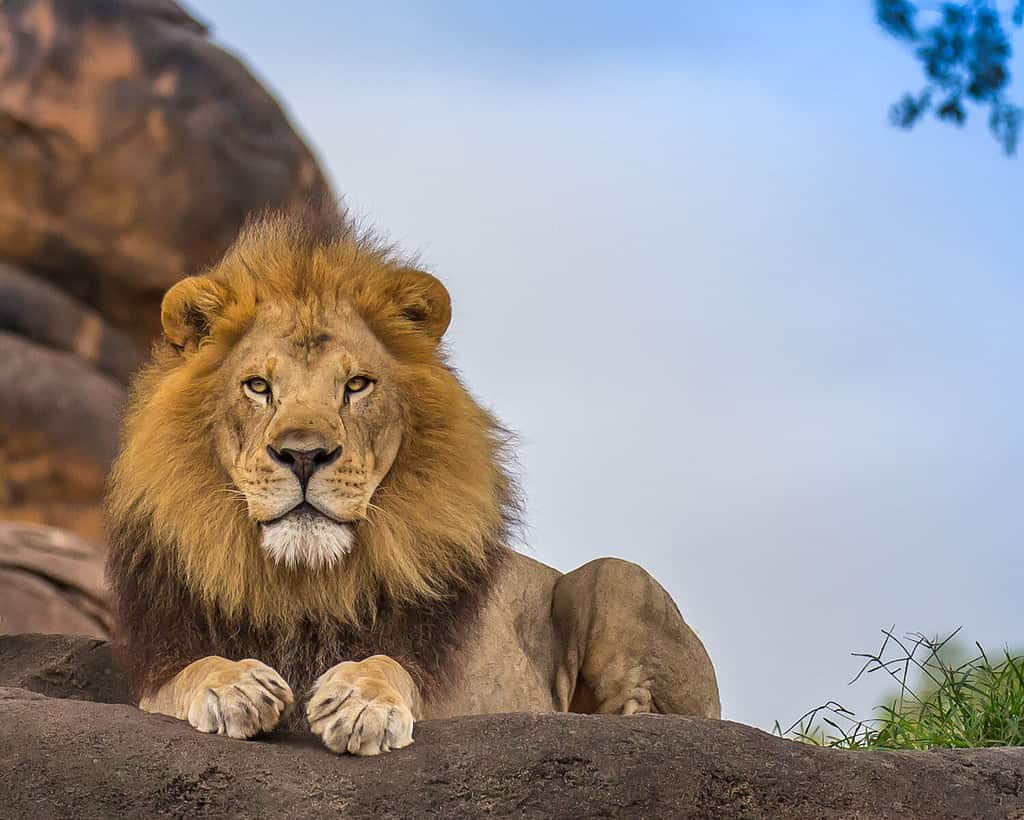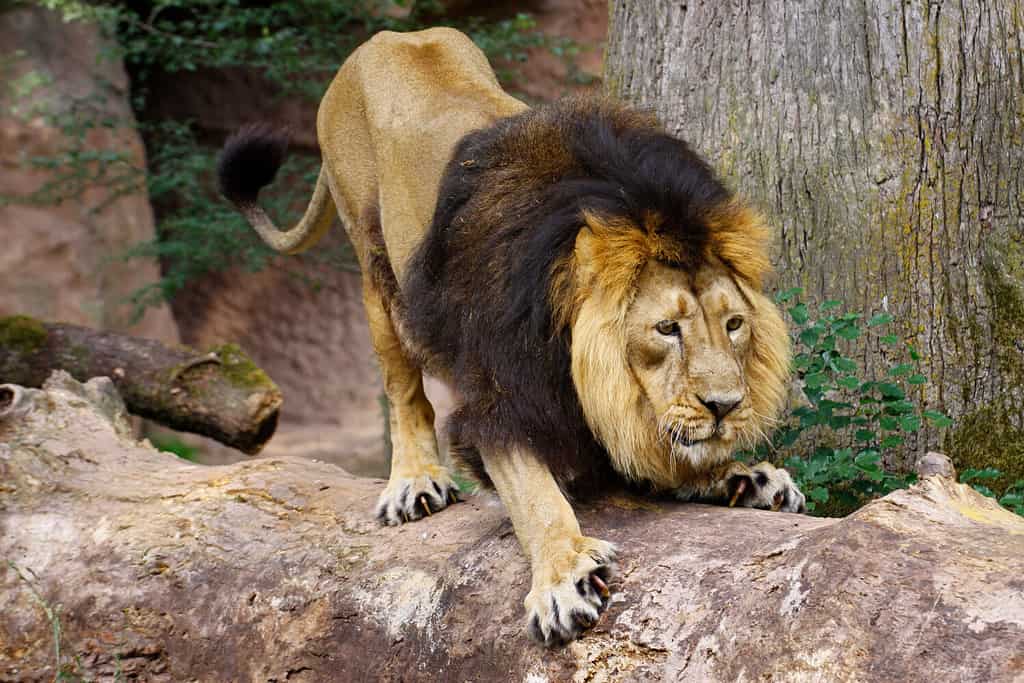At first glance, lions might all appear to come in the same warm, tawny yellow color. However, there are noticeable variations in coat color among male and female lions. These color variations depend a lot on genetics and environmental factors. Discover the range of colors you can see in Panthera leo and learn about what influences those variations.
Why Do Lion’s Colors Vary?
Not all lions have the same fur color, but it is not entirely random. Some variations can be attributed to genetics, which determines whether lions have a lighter or darker color. Natural selection ensures that female lions pick strong mates with desirable characteristics, such as better nutrition and more testosterone, which may be passed on to their offspring. Beyond mane color in males, there do not appear to be many studies of lion coat color and the benefits of a lighter or darker shade.
Mane color has been the primary focus of many researchers in the past, with findings pointing to longer lifespans and higher offspring survival rates for males with the darkest manes. Studies of lions at different ages indicate that manes darken consistently as they age, particularly the chest area. Older, more mature lions can be picked out in the wild by looking for a darker mane color.
A Note On Subspecies Variation
Lions once roamed a much larger territory than they do today. Records indicating various subspecies of lion sometimes highlight dominant colors documented in those populations. Color variation among subspecies can happen naturally when populations become cut off from each other and develop separately.
The Cape lion lived in South Africa, near the Cape of Good Hope, until becoming locally extinct in the 19th century. They differed from other populations and specimens with their black-edged ears and a large, black mane. Today, members of the Panthera leo melanochaita subspecies are considered similar or related to the Cape lions. This subspecies is referred to as both the Southern lion and southern subspecies.
The Barbary lion was also known as the Egyptian lion. It once lived in the deserts and mountains of North Africa. Genetic research has discovered that Barbary lions were probably very closely related to another subspecies, the Asiatic lion. The Asiatic lion, however, remains only in a small part of India today. These lions range in color, with some more heavily speckled with black or a silvery grey look not typical in other populations.
1. Tawny Yellow

Male and female lions often begin life with a lighter coat color, which may darken with age.
©Olha Solodenko/Shutterstock.com
Tawny yellow is likely the shade you associate most lions with, whether you have only seen pictures of them in the wild or visited them at a local zoo. Younger lions of both sexes are often lighter than older lions. This golden color appears more noticeable in male lions because their manes darken as they age.
2. Orange-Brown

Orange-brown lions have a slightly deeper shade of tawny that is less yellow with more elements of orange.
©Jrossphoto/Shutterstock.com
Other lions display a deeper shade of tawny with more elements of orange. Orange-brown coloring is often more noticeable on male lions in their manes, although female lions can show a deeper hue, too.
3. Dark Brown

Researchers have documented lion’s manes darkening with age.
©R. Maximiliane/Shutterstock.com
Some lions might be born with a darker coat, considered dark brown. However, do not misconstrue this to mean almost or entirely black. There have never been any documented instances of a black lion born in the wild or captivity. As lions age, their coats might darken more. A darker mane on a male lion indicates maturity to potential mates.
4. White

White lions may vary in their exact shade from blonde to off-white.
©Vladimir Wrangel/Shutterstock.com
A white lion does not typically have albinism, a genetic condition where animals do not create pigment. Instead, white lions have a unique gene mutation called leucism. Leucistic animals only have partial loss of pigment, which accounts for a variation of color. For example, white lions have visible pigmentation in their paw pads, lips, and eyes. White lions are also not always very white but may appear more blonde.
White lions live in captivity around the world, including in many zoos. However, white lions have only been documented in the wild in South Africa. Specifically, white lions have been born in the Timbavati Private Nature Reserve and Kruger National Park, although adult white lions appear rare.
Summary of Lion Colors
| Ranking | Color |
|---|---|
| #1 | Tawny Yellow |
| #2 | Orange-Brown |
| #3 | Dark Brown |
| #4 | White |
The photo featured at the top of this post is © Igor Anfinogentov/Shutterstock.com
Thank you for reading! Have some feedback for us? Contact the AZ Animals editorial team.







